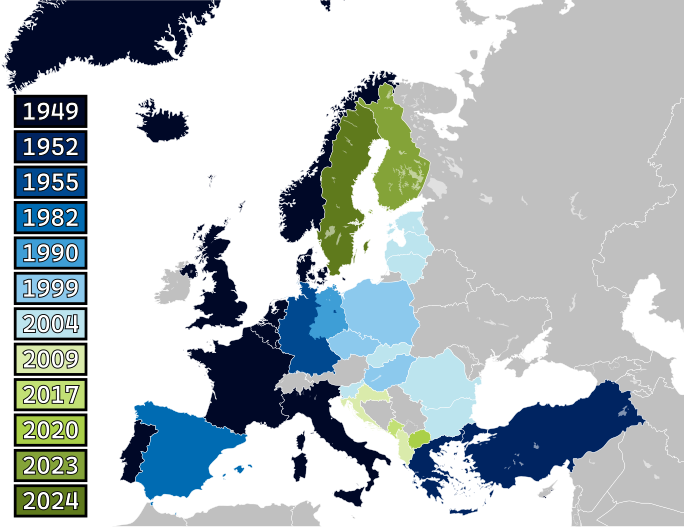
Introduction to NATO Countries
The North Atlantic Treaty Organization (NATO) is a military alliance established in 1949, consisting of 31 member countries committed to collective defense. With ongoing geopolitical tensions, especially in Eastern Europe and the Middle East, the importance of NATO countries is more prevalent than ever. As global security dynamics shift, understanding the role and responsibilities of NATO countries becomes crucial for both member nations and the international community.
Current NATO Membership
As of October 2023, NATO comprises 31 countries, with Sweden’s application recently pending acceptance. The original founding members include the United States, the United Kingdom, France, Canada, Italy, and several others in Western Europe. Over the decades, NATO has expanded to include countries from Eastern Europe, notably after the end of the Cold War, such as Poland, Hungary, and the Czech Republic. The most recent members are Montenegro (2017) and North Macedonia (2020).
Significant Events Involving NATO Countries
Recent geopolitical events, such as the Russian invasion of Ukraine, have rekindled alliances within the NATO framework. In response, NATO has bolstered its military presence in Eastern Europe, with increased troop deployments in Poland and the Baltic states. Additionally, NATO’s collective defense clause (Article 5) remains a cornerstone in safeguarding not only its member states’ territories but also promoting stability in the broader region.
Challenges and Future of NATO
Despite its successes, NATO faces numerous challenges, such as differing national priorities among member countries and increasing defense spending requirements. The fight against terrorism, cyber threats, and maintaining cooperation in a multipolar world are key issues that NATO countries must navigate. Recently, discussions have highlighted the importance of expanding NATO’s capabilities to address these emerging threats, indicating a shift towards a more comprehensive security approach.
Conclusion
The significance of NATO countries is illustrated by their strategic collaborations and collective efforts in addressing global security challenges. For the citizens of NATO member nations, the continued commitment to mutual defense and regional stability remains vital. As the geopolitical landscape evolves, NATO’s adaptability and cohesion will be crucial in reinforcing peace and security not just in Europe, but globally.



